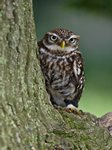Our native wildlife is under pressure like never before – from erosion of habitats, climate changes and diseases such as that affecting bees. But with a little effort (or even lack of it – see below) we can all do our bit to help. "But what difference can I make", you say, "I only have a small urban garden". In fact you have a million acres! Not you personally, of course, but all of you together, so if we all do a bit, the overall effect could be very significant. And we will also improve our own personal environment, by encouraging the birds, butterflies and bees we love to see. Here are our top ten tips for encouraging wildlife in your garden.
1 Flowers for colour – and more
It may seem obvious but don’t forget to include plenty of colourful flowers to attract and feed bees, butterflies and other insects. Almost all flowers will do (that is what they are for, after all) but some are particularly suitable – click here to see our full list of wildlife-friendly varieties. We also offer a range of wildflowers which are ideal for wildlife.
2 Take another look at your lawn
You may not think lawns can offer much for wildlife , but in fact they are home to a host of insects which in turn provide food for birds and other animals. By avoiding the use of chemicals, leaving the grass a lttle longer (around 3 – 5cm) and mowing less often (say, every two weeks but certainly no more than weekly) you will encourage these harmless insects to thrive. Leaving the grass longer during winter and not mowing again until march will provide shelter and hibernation sites for many insects.
3 Beautiful grasses
If you can leave an area of longer grass – 20-30 cm – that is even better as it will provide shelter for grasshoppers, lacewings and many other creatures, as well as producing seed as food for birds. Alternatively plant taller ornamental grasses in the border, which can have the same effect.
4 Don’t throw out all the deadwood
Leave a pile of dead wood in a shady spot and this will serve as a shelter for beetles and other insects.
5 Our feathered friends
Birds are among the most welcome garden visitors, so encourage them to stay by providing food and nesting sites such as boxes (out of reach of cats!). Why not take a look at our birdcare range?
6 Urban oasis
Even a small pond can be a little oasis for wildlife, attracting beautiful dragonflies, offering water for birds and small animals,and providing habitats for frogs, newts and many aquatic insects.
7 Be more patient with pests
Try to avoid the use of chemicals to control pests. – instead, encourage their natural predators with plants which will attract them, for example chamomile, marigolds and hyssop. If you need to tackle a particular problem pest, try our range of natural pest controls.
8 Grow your own manure
Growing green manure over winter helps maintain nutrients in the soil and provides competition for weeds, minimising the need for weedkillers and reducing the need for additional fertilisers.
9 Plant a herb garden
Borage, chives, comfrey, fennel, hyssop, lavender, lemon balm, lovage, mint, rosemary and thyme all encourage beneficial insects as well as producing delicious ingredients for the kitchen. Take a look at our herb range.
Leave a corner of the garden undisturbed and it willl naturally become a haven for wildlife – what could be easier? If there are a few logs and old pots for shelter so much the better.


